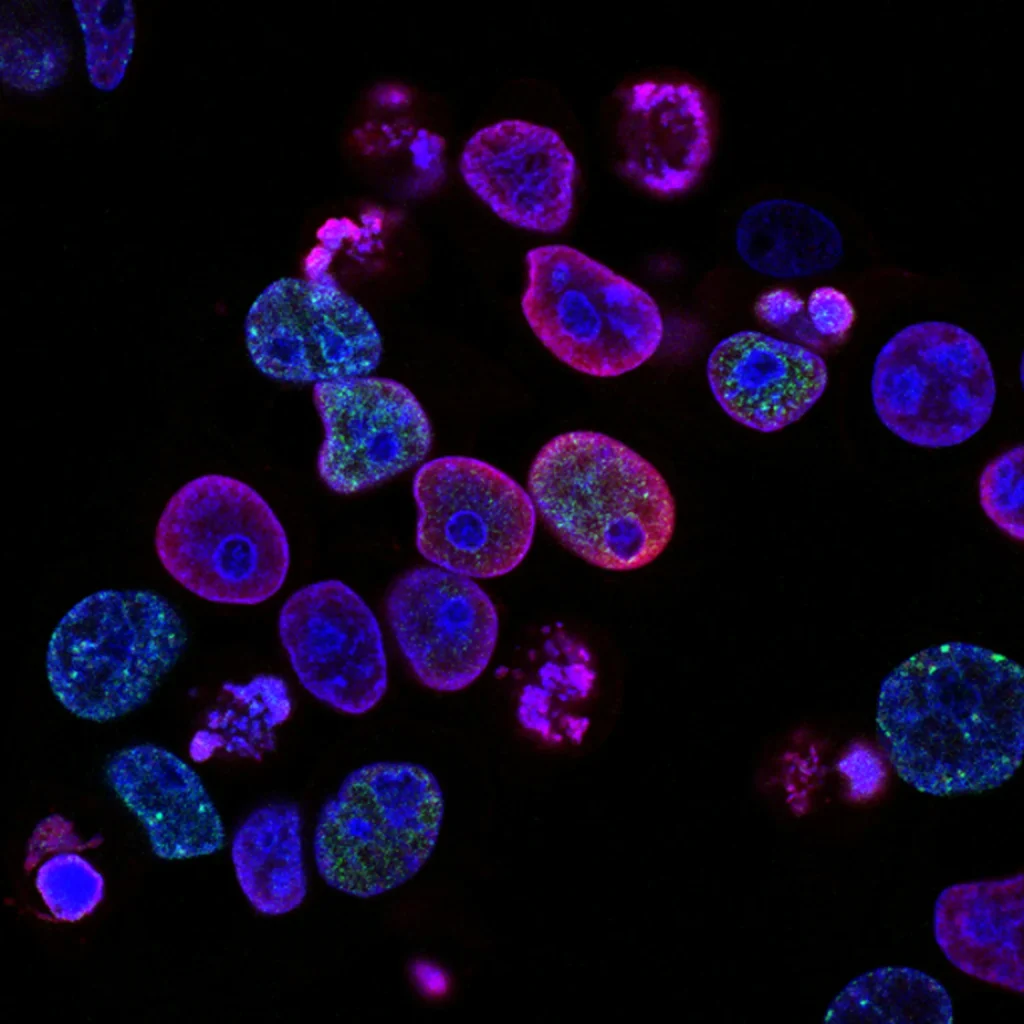How Long Does It Take To Reverse Prediabetes: Ultimate Guide

This post may contain affiliate links, meaning I may earn a commission if you make a purchase, at no extra cost to you. I only recommend products I trust. Thank you for your support.
Prediabetes, a condition affecting one in three Americans, marks a critical juncture between normal health and the onset of type 2 diabetes.
Characterized by higher than normal blood sugar levels, prediabetes is a reversible condition, offering a window of opportunity for individuals to prevent the progression to type 2 diabetes through various interventions [1] [2]
Astonishingly, over 80% of Americans with prediabetes are unaware of their condition, underscoring the urgent need for increased awareness and proactive measures to address this growing health concern [3].
Reversing prediabetes is a significant and achievable goal for many individuals through proactive lifestyle modifications.
One of the common questions among individuals diagnosed with prediabetes is how long does it take to reverse prediabetes.
Through lifestyle changes and evidence based tactics for reversing prediabetes, this article offers a roadmap for those seeking how to reverse prediabetes.
How Long Does It Take To Reverse Prediabetes
While the timeline for reversing prediabetes can vary, research suggests that it is possible to achieve significant improvements in as little as 3 months.
The duration required to reverse prediabetes can vary based on several factors, including the specific interventions implemented, individual health characteristics, and the level of adherence to recommended lifestyle changes.
Understanding the timeline for reversing prediabetes can provide valuable insight and motivation for individuals looking to take control of their health and prevent the progression to type 2 diabetes.
This article aims to explore key strategies focusing on dietary changes, physical activity, and lifestyle adjustments, including strategies for how to reverse prediabetes in 3 months or less.
How To Reverse Prediabetes In 3 Months Or Less
Reversing prediabetes naturally within a three month timeframe can be achieved by focussing on making sustainable lifestyle changes.
The following are proven strategies to help you in reversing prediabetes in 3 months or less:
1. Modest Weight Loss
Aim to lose 5-7% of your body weight. This moderate goal has proven to significantly reduce the risk of developing type 2 diabetes by 54% over the next three years.
For those who need more substantial weight loss, aiming for a 10-15% reduction can lead to remission of prediabetes in 70-90% of cases.
A decrease of about 35 inches in waist circumference for women and and 40 inches for men is associated with higher chances of reversing prediabetes.
Proven studies shows individuals with prediabetes who lost 10% or more of their body weight within 6 months, saw an 85% reduction in the risk of developing type 2 diabetes over the next three years [5].

2. Dietary Adjustments
Aim to limit added sugars in your diet. Opt for naturally sweet foods like fruits instead of foods with added sugar.
Incorporate fiber-rich foods to reach a goal of 25 to 30 grams per day. Fiber helps manage glucose levels and supports digestive health.
Prioritize whole, nutrient-dense foods such as fruits, vegetables, lean proteins, and healthy fats. These foods are rich in essential nutrients and have a lower impact on blood sugar levels.
Reduce intake of processed foods and refined carbohydrates, which can cause spikes in blood sugar levels and contribute to weight gain.
Incorporate healthy fats from sources like avocados, nuts, seeds, and olive oil. Limit saturated and trans fats by choosing lean protein and low-fat dairy.
Choose complex carbohydrates like whole grains, legumes, and vegetables over simple sugars. Complex carbs provide sustained energy and help manage blood sugar spikes.
Be mindful of your carbohydrate intake. Understanding carbohydrates and their impact on blood glucose is crucial for managing prediabetes. The carb cycling meal plan can help you with this.
It seems complicated right?, Do not worry, we compiled for you a 7-day prediabetes meal plan to get your started.
You may also consider consulting a dietitian for individualized meal plans tailored to your specific needs.

3. Regular Physical Activity
Aim for at least 30 minutes of aerobic exercises per day to see significant benefits or at least 150 minutes of moderate to high-intensity exercise three to five times a week.
Aerobic exercises like walking, cycling, and swimming are excellent for burning calories and improving cardiovascular health.
Studies show that aerobic exercise can lead to substantial improvements in body mass index (BMI), fasting blood glucose (FBG), 2-hour postprandial glucose (2hPG), and hemoglobin A1c (HbA1c) levels, indicating better control over prediabetes.
The American Diabetes Association also recommends adults with prediabetes engage in at least two sessions of strength training exercises per week, in addition to 150 minutes of moderate-intensity aerobic activity.
Start with strength training exercises exercises that you’re comfortable with, such as lunges, planks, pull-ups, push-ups, sit-ups, and squats.
Strength training exercises can enhance fat oxidation and lower abdominal fat, which is crucial for reversing prediabetes.
4. Stress Management
Chronic stress can elevate blood sugar levels, so practicing stress-reducing techniques like meditation, yoga, or deep breathing can be beneficial.
Manage stress through practices like meditation, yoga, or deep-breathing exercises, as stress reduction is crucial in lowering the risk of developing type 2 diabetes.
5. Lifestyle Changes
Simple changes like avoiding prolonged sitting by getting up and moving around every hour can significantly impact your glucose levels.
These small, consistent movements throughout the day add up and help in stabilizing blood sugar.
Smoking increases the risk for insulin resistance and prediabetes. Taking steps to stop smoking is a significant move towards better health.
Explore intermittent fasting as a method to improve insulin sensitivity. You can start with this beginner intermittent fasting meal plan.
If lifestyle changes are not sufficient, medications such as GLP-1 receptor agonists, AGIs, and insulin sensitizers may be prescribed to help manage prediabetes [4].
6. Monitoring Blood Sugar Levels
A glucose tolerance test measures blood sugar before and after drinking a glucose liquid. A result of 140–199 mg/dL signals prediabetes.
An A1C Test provides an average blood sugar level over the past 2-3 months. A result in the range of 5.7%–6.4% indicates prediabetes.
Knowing your target blood sugar range is crucial. For most individuals with prediabetes (not pregnant), the recommended targets are before meals: 80-130 mg/dL, and 1-2 hours after meals: less than 180 mg/dL.
Use your monitoring data to make informed decisions about your care. Questions to ask include:
- What is my target blood sugar range?
- How often should I check my blood sugar?
- What do these numbers mean for my health?
- Are there any patterns indicating I need to change my diabetes care plan?
7. Get Adequate Sleep
Short sleep duration is closely linked to an increased risk of developing diabetes. Specifically, sleeping less than 5 hours a day significantly elevates this risk.
Insufficient sleep contributes to unhealthy glucose levels and insulin resistance, making it a contributing factor to prediabetes.
Moreover, moderate to severe obstructive sleep apnea (OSA) is identified as a risk factor for type 2 diabetes.
The American Academy of Sleep Medicine and Sleep Research Society advises getting at least 7 hours of sleep per night for optimal health and functioning.
8. Keep Hydrated
The National Academy of Sciences recommends a daily water intake of 91 ounces for women and 125 ounces for men.
This guideline is particularly important for individuals with type 2 diabetes to help ensure they’re adequately hydrated.
The color of your urine can be a helpful indicator of your hydration status. Aim for a light yellow color, which suggests proper hydration.
Dark yellow urine indicates that your body is conserving water and that you may need to increase your fluid intake.
Dehydration can trigger an increase in the hormone vasopressin, which not only signals the kidneys to retain water but also prompts the liver to produce more blood sugar.
People with diabetes and prediabetes often experience dehydration due to the kidneys working overtime to filter and eliminate excess sugar, which in turn leads to increased urination and fluid loss.
9. Seek Professional Help
While making lifestyle changes on your own can be effective, seeking professional help can greatly enhance your chances of successfully reversing prediabetes.
Consider working with a registered dietitian or a certified diabetes educator who can provide personalized guidance and support.
They can help you develop a meal plan, set realistic goals, and make adjustments to your lifestyle as needed.
Additionally, they can provide education on diabetes prevention and management, and help you navigate any challenges that may arise along the way.
Key Risk Factors for Prediabetes
Understanding the underlying causes and risk factors is crucial for effective management and reversing prediabetes.
These key risk factors include:
- Genetics: Family history of diabetes or prediabetes can increase the likelihood of developing prediabetes.
- Obesity: Being overweight or obese is a significant risk factor for prediabetes, as excess body fat can interfere with insulin function.
- Sedentary Lifestyle: Lack of physical activity and prolonged sitting can contribute to insulin resistance and higher blood sugar levels.
- Unhealthy Diet: Consuming a diet high in processed foods, sugar, and unhealthy fats while lacking in fiber and nutrients can increase the risk of prediabetes.
- Age: The risk of prediabetes tends to increase with age, especially after 45 years old.
- High Blood Pressure: Hypertension or consistently high blood pressure levels are associated with a higher risk of developing prediabetes.
- High Cholesterol: Elevated levels of LDL cholesterol and triglycerides can contribute to insulin resistance and prediabetes.
- Ethnicity: Certain ethnic groups, such as African Americans, Hispanic/Latino Americans, Native Americans, and Asian Americans, have a higher predisposition to developing prediabetes.
- Gestational Diabetes: Women who had gestational diabetes during pregnancy are at increased risk of developing prediabetes later in life.
- Polycystic Ovary Syndrome (PCOS): Women with PCOS have a higher risk of insulin resistance and prediabetes.
Conclusion
Reversing prediabetes is a journey that requires commitment, dedication, and a comprehensive approach to lifestyle changes.
While the timeline for reversing prediabetes can vary, it is possible to achieve significant improvements within a 3 month timeframe.
By taking small, consistent steps towards improved dietary habits, increased physical activity, and incorporating lifestyle changes, individuals can forge a path toward not just reversing prediabetes but also fostering a sustainable, healthy lifestyle.
Remember, every step you take towards reversing prediabetes is a step towards a healthier and happier future.
Engaging with this article allows for a deeper understanding and appreciation of the achievable steps one can take towards reversing prediabetes.
If you have been diagnosed with prediabetes, don’t wait any longer. Take action today to reverse the condition and prevent the onset of type 2 diabetes.
Consult with a healthcare professional, make necessary lifestyle changes, and commit to your health.
- South beach diet for weight loss
- Ozempic diet meal plan
- Real food diet
- 40 Mediterranean diet breakfast recipes
- Carnivore diet for weight loss
- Diabetic meal plan
- Vegetarian breakfast ideas
- Gluten free meal plan
- 7-day meal plan for type 2 diabetes
Frequently Asked Questions (FAQs)
What is the typical duration for reversing prediabetes to normal levels?
The time it takes to normalize prediabetes varies from person to person, depending on factors like their initial weight and how active they are.
While some individuals might need to lose more weight to lower their diabetes risk, improvement can be observed in a matter of weeks, months, or even years.
Can eliminating sugar from my diet help reverse prediabetes?
Yes, cutting down on added sugars is crucial for reversing prediabetes. Excessive consumption of added sugars can lead to spikes in blood sugar levels and contribute to weight gain.
What’s the fastest way to reverse prediabetes?
The fastest strategy for reversing prediabetes includes adopting a healthy diet rich in fruits, vegetables, nuts, whole grains, and olive oil; increasing physical activity; shedding excess weight; quitting smoking; and taking medications if necessary.
Is it possible to reverse prediabetes for good?
Prediabetes can indeed be reversed for good. Each year, about 3% to 10% of individuals with prediabetes progress to type 2 diabetes, meaning their blood glucose levels escalate from the prediabetes range to the diabetes range.
However, making positive lifestyle changes and maintaining those changes can help in reversing prediabetes for good before it progresses to type 2 diabetes.
Can genetics affect the ability to reverse prediabetes?
Genetics can influence how quickly prediabetes can be reversed. Some individuals may have a genetic predisposition to insulin resistance, which can make it more challenging to reverse prediabetes.
However, lifestyle changes can still have a positive impact on blood sugar control, even in individuals with a genetic predisposition.




